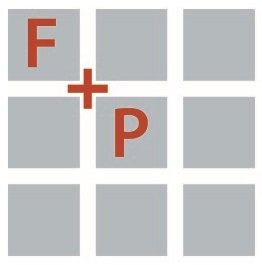Newton to Implement Design Guidelines to Help Permit Complex Mixed-use Developments
/By Michael A. Wang
The City of Newton, Massachusetts is in the process of simultaneously permitting two large-scale redevelopment projects – Northland Newton and Riverside Station – both of which consist of more than one million square feet, including a variety of commercial uses and a significant amount of multi-family residential product. The projects have interesting similarities in that they are both sited in “gateway” locations along the Rt. 128 corridor and rely on a compact urban approach to development which, in addition to density, focuses on creating a new public realm of streetscapes and open spaces.
Northland Site along the Needham Street Corridor + Riverside Station Site adjacent to Route 128
Recent local community visioning efforts for both areas have helped to identify similar overarching goals for redevelopment that include preferred land use, environmental health and transportation issues. Each site, however, also presents unique qualities that need to be thoughtfully addressed. The Northland project bridges between the Needham Street commercial corridor and the Newton Upper Falls Village, and includes the historic Saco Mill Building, which the development team has chosen to embrace. Mark Development’s Riverside project, while in a more isolated context, will include the redesign of a highway interchange and the integration of an MBTA terminus station, along with its associated parking and multi-modal requirements.
Needham Street Area Vision Plan
The City of Newton, and their Planning & Development Department, has been forward-thinking in its approach to the approvals process for these complex redevelopment projects. One of the greatest challenges in permitting these types of projects is ensuring that the initial master plan vision for the site is consistently executed over the many years that neighborhood developments of this scale may be phased. Newton’s strategy for addressing this challenge has been to create a new set of Design Guidelines that will help the City evaluate each successive building permit application to determine if the evolving “sum of the parts” continues to work towards the original vision.
Form + Place, a Newton-based architecture and planning firm, which is an Urban Design On-Call Consultant for the City, has been working closely with the Planning & Development Department, as well as the projects’ proponents, to craft a Design Guidelines tool. The Guidelines, as currently developed for the Northland project, are structured to address architectural design and place-making issues at a range of scales, including at the District Level, the Block Level and the Building Level. Among the specific areas of focus, the Guidelines establish expectations for how the project will connect to its surrounding context, how public space will be designed and integrated, and how the finer grain details of streetscape design and building architecture will all work together to help realize a cohesive vision.
Newton’s Design Guidelines reference a range of contexts and architectural vernaculars
Unique place-making precedents from Storrs, Ct and South Boston waterfront
The intent of the Design Guidelines approach is to allow for Site Plan approval to occur without the complete details of the development’s design having been finalized. The framework is intended to give the City necessary assurances that the final execution of the project will be of the highest quality, while giving the developer some flexibility to respond to evolving market conditions over an extended period of time that may, for example, change the desired mix of uses. While approval will ultimately come from Newton’s Commissioner of Inspectional Services, “consistency” recommendations will be provided by Staff, Peer Reviewers, the Urban Design Commission and the Land Use Committee of the City Council using a new Design Guidelines Evaluation Template.
Having helped author a wide range of zoning mechanisms - including hybrid form-based codes, overlay districts and new mixed-use districts - for communities throughout the northeast corridor, Form + Place’s interest in facilitating context-appropriate redevelopment continues to be founded in the belief that form-making and place-making must be wholly integrated, and in touch with current economic development realities. At the root of Form + Place’s collaborative approach to community building is a fundamental understanding of how to find common ground between the development world and community goals that have been articulated in local area visions.





